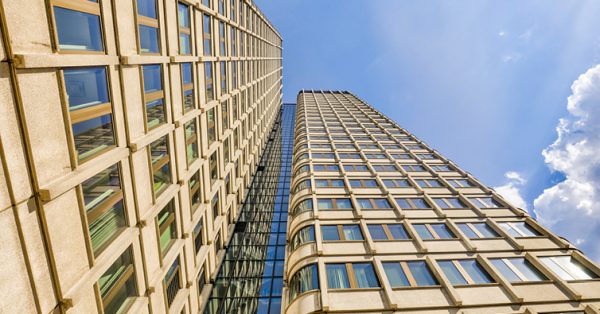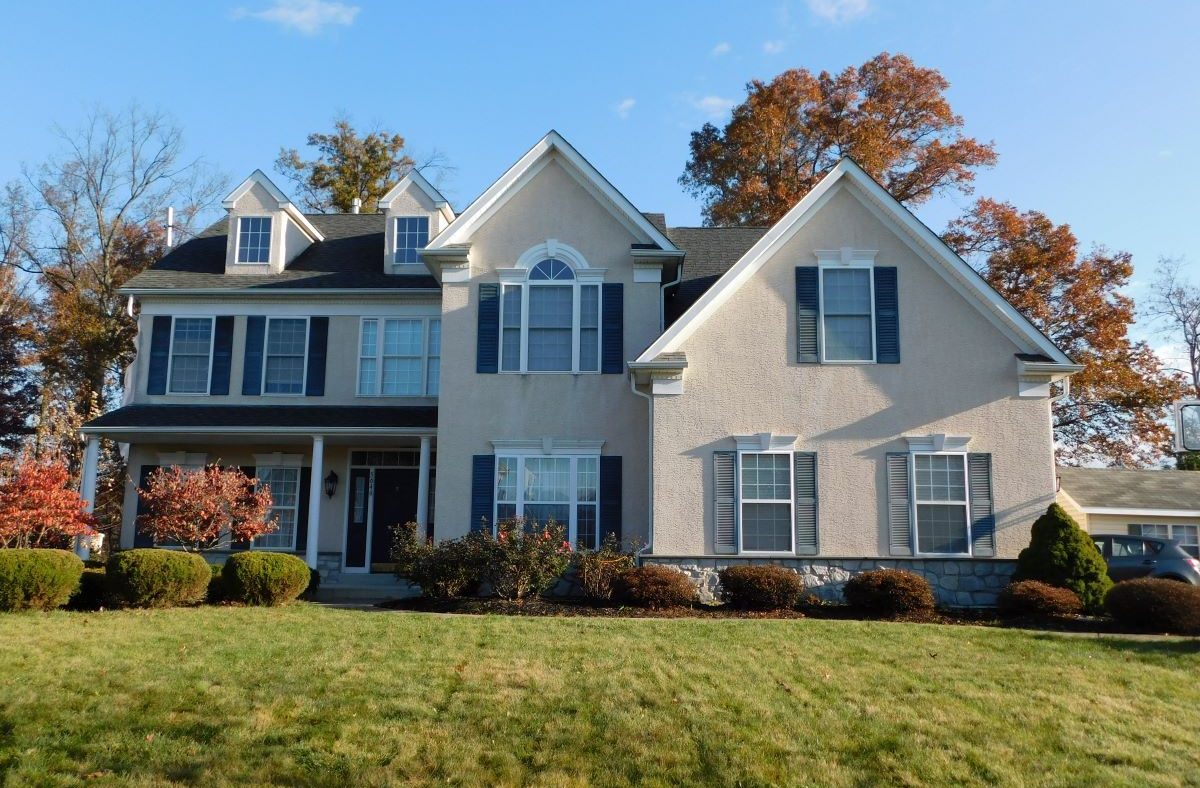If you were to ask a home or building owner whether the exterior of their building was covered with stucco or EIFS, you may get a confused response. Most people would probably tell you it’s stucco. From the outside, they may look the same, but structurally, they are two very different types of finishes. In this two-part series, we will take a look at the structure, installation, advantages, and disadvantages of each finish.
What are Stucco and EIFS?
Stucco and EIFS are two similar looking exterior wall cladding finishes. Stucco is a traditional material and process that has been around for centuries all over the world. Exterior Insulation and Finishing System (EIFS) was invented in Europe after World War II to repair and insulate the exterior of damaged buildings and was introduced in the USA in the 1960s as an exterior wall option. EIFS (Pronounced “eefs”, “eefis” or “E.I.F.S.”… there’s no wrong way to say it) mimics stucco and is sometimes called “synthetic stucco.” Stucco and EIFS are commonly installed on single family homes, townhomes and low/mid-rise commercial/residential buildings. These cladding options are most often placed over framed walls with sheathing but can also be applied over concrete and masonry.
Stucco
- Also called “Hard Coat Stucco” and “Exterior Plaster”
- Definition: “An exterior finish composed of some combination of Portland cement, lime, and sand, which are mixed with water, which dries to a very hard textured finish” [1]
- Design Concept: Protects the underlying building components from the weather with a concealed weather-resistant barrier water management and drainage system via:
- Weather Resistant Barrier installed on the building’s sheathing
- Flashing and weeps to direct water that may get behind the face of the stucco harmlessly to the exterior
Types of Stucco
- Traditional” “Three-coat” stucco system (most common). When installed to meet the building code, these systems are a minimum of 7/8 inch thick
- “One” or “Two-Coat”, proprietary systems are also available (must be approved to meet code). These systems may be as thin as 3/8 inch.
Advantages of Stucco
- Impact and fire resistance
- Durable in a variety of climates
- Low maintenance
- Design flexibility (exterior trim, cornices, keystones, friezes, soffits, etc.)
Stucco Installation
Residential stucco systems in most areas of the country are installed over wood or metal framing and wood or gypsum sheathing. The sheathing is required by the building code’s referenced standards to be covered with 2 layers of a water-resistant barrier (“WRB”) sheet on a roll. Over the WRB a wire mesh or “lath” is stapled or nailed to the sheathing. Integrated between the WRB and the wire mesh should be flashing and weeps, which are mechanisms to direct water away from the sheathing and the building interior. Stucco can also be accessorized with expansion and termination joints to help keep the stucco from cracking and proper sealants. Stucco systems should only be installed as designed by a registered design professional or according to the manufacturer’s instructions and must comply with the building code.
Over the wire mesh, flashing, and accessories, the coats of cement plaster are installed, usually in three coats. The first or base coat commonly called the “scratch coat” is intended to “key in” to the mesh (to hold it on the building). The second coat, also known as the “brown coat,” is trowel applied uniformly and flat to provide a smooth surface for the finish coat. Finish coats are typically thin and may be made with tinted cement plaster or be an acrylic / elastomeric troweled coating. Stucco systems are governed by building codes and referenced standards, most notably within the International Residential Code, Chapter 7.
Problems with Stucco
- Cracks may form from a variety of reasons, some within the applicator’s controls, such as proper flashing and sealing, proper thickness, and curing procedures. Building movement and settlement, as well as expansion and contraction, also cause stucco to crack and are usually beyond the installer’s control.
- Water Intrusion can occur from cracks but also when the stucco system cannot drain incidental water which penetrates its face layer and becomes trapped within the building walls, leading to damages to building components. This can be caused by both improper design, oversight, and installation.
Stucco systems have been successfully installed in countries where masonry materials are generally used, while residential construction materials in the United States are commonly wood-based (e.g. dimensional framing, engineered materials, paper-faced gypsum). Wood fiber-based materials readily support mold growth and decay when exposed to elevated moisture levels.
In part two of this series, we will take a closer look at the structure, advantages, and disadvantages of EIFS; otherwise known as synthetic stucco.
To learn more about VERTEX’s Forensic Consulting services or to speak with a Construction Expert, call 888.298.5162 or submit an inquiry.
Author: Robert Klein
Series: Hard Coat Stucco vs. EIFS (Synthetic Stucco)
Hard Coat Stucco vs. EIFS (Synthetic Stucco): Part OnePart 1
Hard Coat Stucco vs. EIFS (Synthetic Stucco): Part TwoPart 2
Related Services

VERTEX’s seasoned forensics team includes accounting, architectural, engineering, and construction experts who have worked on thousands of construction and design disputes.
Learn More

Our highly trained Forensic Experts with current, real-world experience augment your team with construction, engineering design, and environmental expertise.
Learn More
Reference
[1] Dictionary of Architecture and Construction, Fourth Edition





